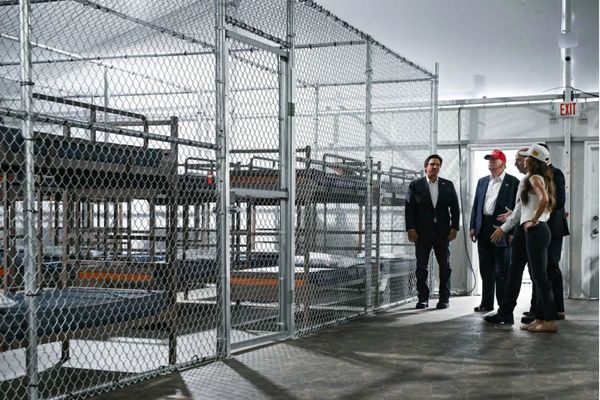
For many American families, $100,000 is often seen as the threshold for financial stability. At this income level, covering housing, child care and saving for the future starts to feel more attainable. However, raising a child on less than $100,000 a year takes careful budgeting, smart prioritization and disciplined spending.
Read More: 4 Surprising Things That Could Impact Your Wallet If a Recession Hits
Check Out: 4 Affordable Car Brands You Won't Regret Buying in 2025
According to Kat Ngo, licensed CPA and personal finance professional at Vetted Prop Firms, families living near or below this income level can still build savings and meet essential expenses by following a clear financial plan grounded in realistic numbers.
How Funds Are Allocated
Ngo explained that on a gross annual salary between $95,000 and $100,000, take-home pay after federal and state taxes, Social Security, Medicare and a modest 3% retirement deferral usually lands near $6,200 per month. This net income reflects what families actually have available to allocate toward housing, child care, groceries, savings and other recurring costs — a number that can feel surprisingly modest when compared to the gross salary figure.
Find Out: The Living Wage a Family of 4 Needs in All 50 States
Housing Costs
Housing often claims the largest share of a family’s monthly budget. Ngo said financial advisors generally recommend keeping housing costs below 30% of net income to avoid strain. That translates to about $2,100 per month for rent or mortgage payments, including taxes and insurance. Zillow’s 2025 Rent Index showed median rents for two-bedroom apartments in many mid-sized cities fall within this range, though local markets vary widely. Many families opt for smaller or older homes to keep housing affordable and free up funds for child care or savings.
Child Care Costs
Child care expenses are another major budget item, and one of the most variable. Ngo pointed out that many families manage to spend around $1,000 per month on part-time daycare or after-school care. They do this by alternating work schedules, getting help from grandparents or using extended school enrichment programs that run later into the afternoon. According to the Economic Policy Institute, the average cost for center-based infant care in the U.S. reached $12,350 annually in 2024, making these budget-friendly strategies essential.
Food and Clothing
Feeding a family of three can cost roughly $700 per month when focusing on unprocessed staples, weekly specials and in-season produce, Ngo said. The USDA’s 2025 Cost of Food report supported this figure, showing grocery expenses have remained a major household budget item. Ngo emphasized that meal planning and home cooking play a major role in controlling grocery costs. Replacing just one takeout meal per week with a homemade dinner can save hundreds of dollars annually.
Many parents also save money by buying children’s clothing and gear secondhand through online marketplaces or consignment stores, reducing clothing expenses by as much as 70%.
Transportation
Transportation costs average about $500 per month for a single car, including the loan payment, insurance, gas and maintenance. Often, the other adult in the household will rely on public transit or carpooling to save on expenses. This estimate aligns with data from the Bureau of Transportation Statistics on vehicle ownership costs.
Healthcare
Health insurance premiums through employer-sponsored family plans typically cost around $400 monthly. Out-of-pocket medical and dental expenses add roughly another $100. Utilities and internet usually total $300 per month, and cell phone bills for two lines average $160. Adding in a streaming subscription and a low-cost gym membership brings the total for recurring household expenses up by about $50.
Remaining Expenses
The remainder in checking accounts is then truly discretionary, and can be used for entertainment, additional clothing, school field trips, dining out (occasionally) and birthday gifts. Ngo said these spending choices should be conscious trade-offs rather than sacrifices.
Ngo noted that trade-offs are inevitable, but they don’t have to feel like losses. Living in a smaller, older home might allow a child to participate in extracurriculars they love. Choosing a high-deductible health plan with a health savings account can offer long-term tax advantages. Tax credits, such as the Child Tax Credit or the Child and Dependent Care Credit, can also return more than $3,000 at tax time, helping families build emergency savings or pay down debt
The goal isn’t perfection, but consistency. A clear plan, regular check-ins and shared visibility between adults can go a long way in keeping the household financially steady, even when income doesn’t stretch as far as it used to.
More From GOBankingRates
- 6 Costco Products That Have the Most Customer Complaints
- Mark Cuban Warns of 'Red Rural Recession' -- 4 States That Could Get Hit Hard
- How Much Money Is Needed To Be Considered Middle Class in Your State?
- 10 Unreliable SUVs To Stay Away From Buying
This article originally appeared on GOBankingRates.com: I’m Raising a Kid on Less Than $100,000: Here’s My Monthly Budget







